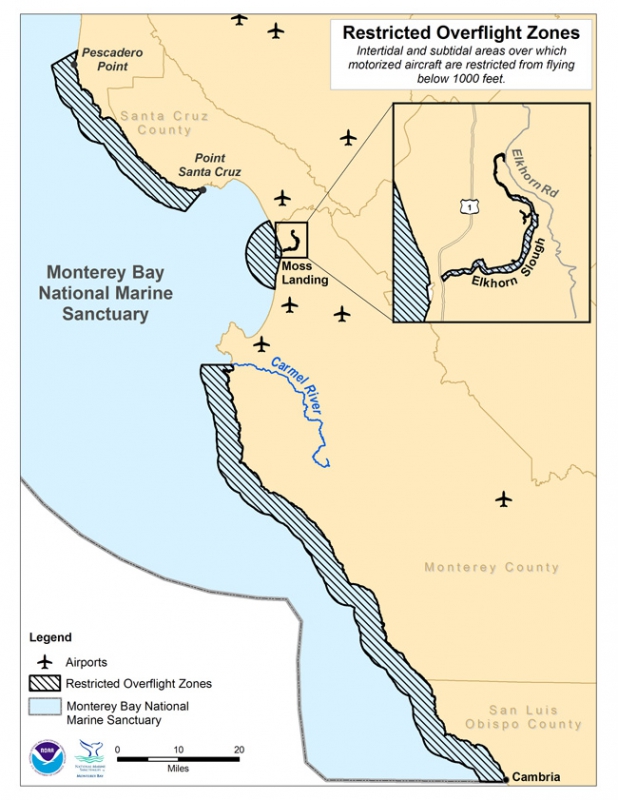From the Open-Publishing Calendar
From the Open-Publishing Newswire
Indybay Feature
Though Prohibited, Drone Use Increases Over Monterey Bay National Marine Sanctuary
In June, Monterey Bay National Marine Sanctuary Superintendent Paul Michel issued a statement about the increased use of unmanned aircraft systems (drones) in the sanctuary over the past year.
A Statement From MBNMS Superintendent Regarding The Use of Unmanned Aircraft Systems
The use of unmanned aircraft systems, also known as aerial drones or quadcopters, has markedly increased in Monterey Bay National Marine Sanctuary (MBNMS) during the past year. It is important for operators to know that these aerial vehicles are regulated above the waters of the marine sanctuary. In many coastal waters, they are not allowed at all.
Drones and piloted aircraft flying at low altitude over beaches and the ocean disturb and frighten wildlife, especially sensitive animals like seals, sea otters, seabirds and shorebirds. For this reason, four overflight restriction zones were established in the sanctuary by the federal government in 1992 to protect marine life from aerial disturbance. Motorized aircraft, including model aircraft and drones, must remain above 1000 feet altitude if they fly over any of these four designated overflight zones. Since the Federal Aviation Administration has determined that model aircraft and recreational drones cannot exceed an altitude of 400 feet within U.S. airspace, this means their use in these zones is illegal under all circumstances.
The four restricted zones (see map) include coastal waters from the mean high tide line up to five nautical miles offshore, and encompass a wide band of sanctuary coastal waters:
* from the north end of Pescadero Marsh south to Point Santa Cruz;
* from the Carmel River mouth south to Cambria;
* from the Sunset State Beach parking lot south to the CEMEX Sand Plant, Marina;
* over the main channel of Elkhorn Slough.
Both within and outside of the overflight restriction zones, sanctuary regulations and other federal laws prohibit harassment of marine mammals, turtles and birds by any means, including disturbance from the air. Therefore, operators who fly drones outside the overflight restriction zones should still be careful not to disturb these animals if they are present.
Both traditional and remotely controlled aircraft (including model aircraft and drones) pose a special threat to marine life because they can easily access areas normally free of human presence. Appearing suddenly they can cause disturbance through sight, sound and movement. Wildlife often react by fleeing quickly, or if they remain behind, stay on high alert to guard against a return of the perceived threat. Such disturbances can create stress and can significantly affect an animal’s health, particularly those that are pregnant or raising young.
Severe or repeated disturbance of wildlife can interrupt feeding and rest, resulting in weight loss, fatigue, sickness and even death. A sudden disturbance that flushes animals off rookeries or nesting colonies can directly injure or cause mortality to eggs and young animals as adults scramble in panic. It can also cause indirect injury by exposing eggs and young animals to cold, heat, predators, dehydration, starvation and stress during the absence of adult protectors.
I urge all sanctuary users to help protect sanctuary wildlife by understanding and adhering to these sanctuary regulations and by reporting marine mammal or seabird disturbance to the NOAA Enforcement Hotline at 1-800-853-1964. For more information about overflight regulations within MBNMS, click here.
Paul Michel
Superintendent
Monterey Bay National Marine Sanctuary
http://montereybay.noaa.gov/new/2014/140617drone-statement.html
Overview of the Issue:
Marine animals, such as sea lions, seals, otters, whales, and birds are found throughout the sanctuary. While some use water and land areas near human populations, most prefer remote habitats, free of disturbance from human activity. Seabirds are often the most sensitive to human disturbance and select coastal cliffs and offshore rocks as preferred resting and nesting sites. Seals and sea lions often share these same or similar remote sites to avoid human activities that startle them, causing stress and serious physiological responses to that stress. Severe and/or repeated disturbance of wildlife can interrupt feeding and sleeping patterns, resulting in weight loss, fatigue, weakened immune systems, sickness, and even death. Sudden disturbances can flush animals off rookeries and nesting colonies, causing direct injury and mortality to eggs and young animals as adults scramble in panic. Disturbances can cause indirect injury by exposing eggs and young animals to cold, heat, predators, dehydration, starvation, and stress during the absence of adult protectors.
Motorized aerial vehicles, whether traditional aircraft or remotely-controlled aircraft, (including model aircraft, and drones), pose a special threat to marine animals due to their ability to access areas generally free of human presence. Aerial vehicles can appear suddenly and cause disturbance by sight, sound, and movement. To some wildlife, a hovering or circling aircraft or drone exhibits characteristics similar to a predator bird, such as a hawk, falcon or seagull. To other wildlife, the whir or hum of a motor is indicative of human presence - something most wild animals instinctively avoid for protection and self-preservation. They equate such disturbance as an immediate and serious threat, and their typical response is to flee quickly. Even if they remain, the animals often continue in an elevated alert posture, on guard against a potential return of the perceived threat. This takes a toll as well. Imagine the impact of a stranger frequently peering into the windows of your home at night. Even if no crime were ever perpetrated, the stress of such uncertain intrusion into your place of rest could begin to have significant effects on your stress level and health. It is no less the case for wild animals, particularly those preparing to give birth or raising young.
The ability of motorized aircraft and drones to loiter in an area (increasing stress in wildlife and potentially disturbing large numbers of animals in a relatively short span of time) requires special attention by natural resource managers across the United States.
How is the Sanctuary involved?
MBNMS addresses overflight disturbance through a mix of educational outreach, regulatory, and enforcement approaches. Educational outreach efforts are described in greater detail under Resource Issues: Wildlife Disturbance.
Sanctuary regulations explicitly prohibit harassment of marine mammals, turtles, and birds by any means, including disturbance from the air. All of the marine mammal and turtle species, and most birds in the sanctuary, are also protected under the Endangered Species Act, Marine Mammal Protection Act or Migratory Bird Treaty Act.
In addition to the general prohibition against disturbance of marine mammals, turtles, and birds, sanctuary regulations prohibit the operation of motorized aircraft (including model aircraft and drones) within four designated overflight restriction zones in the sanctuary. If a flying aparatus of any kind has a motor, then it must remain above 1000 feet altitude within the four zones. The zones include coastal waters from the mean high tide line seaward to distances of up to 5 nautical miles offshore. For more information about overflight restrictions within the MBNMS and other marine sanctuaries on the west coast, visit the National Marine Sanctuaries webpage “Pilots: Know Before You Go!”.
The Federal Aviation Administration (FAA) has determined that model aircraft and recreational aerial drones cannot exceed a maximum altitude of 400 feet (29K PDF) within US airspace. Since sanctuary regulations require any motorized aircraft to remain above 1000 feet within these zones, model aircraft and drones could not do so without violating FAA rules and should therefore avoid these areas completely. For questions and answers about FAA policy regarding unmanned aerial systems (e.g. model aircraft and drones), visit FAA’s website.
http://montereybay.noaa.gov/resourcepro/resmanissues/aircraft.html
The use of unmanned aircraft systems, also known as aerial drones or quadcopters, has markedly increased in Monterey Bay National Marine Sanctuary (MBNMS) during the past year. It is important for operators to know that these aerial vehicles are regulated above the waters of the marine sanctuary. In many coastal waters, they are not allowed at all.
Drones and piloted aircraft flying at low altitude over beaches and the ocean disturb and frighten wildlife, especially sensitive animals like seals, sea otters, seabirds and shorebirds. For this reason, four overflight restriction zones were established in the sanctuary by the federal government in 1992 to protect marine life from aerial disturbance. Motorized aircraft, including model aircraft and drones, must remain above 1000 feet altitude if they fly over any of these four designated overflight zones. Since the Federal Aviation Administration has determined that model aircraft and recreational drones cannot exceed an altitude of 400 feet within U.S. airspace, this means their use in these zones is illegal under all circumstances.
The four restricted zones (see map) include coastal waters from the mean high tide line up to five nautical miles offshore, and encompass a wide band of sanctuary coastal waters:
* from the north end of Pescadero Marsh south to Point Santa Cruz;
* from the Carmel River mouth south to Cambria;
* from the Sunset State Beach parking lot south to the CEMEX Sand Plant, Marina;
* over the main channel of Elkhorn Slough.
Both within and outside of the overflight restriction zones, sanctuary regulations and other federal laws prohibit harassment of marine mammals, turtles and birds by any means, including disturbance from the air. Therefore, operators who fly drones outside the overflight restriction zones should still be careful not to disturb these animals if they are present.
Both traditional and remotely controlled aircraft (including model aircraft and drones) pose a special threat to marine life because they can easily access areas normally free of human presence. Appearing suddenly they can cause disturbance through sight, sound and movement. Wildlife often react by fleeing quickly, or if they remain behind, stay on high alert to guard against a return of the perceived threat. Such disturbances can create stress and can significantly affect an animal’s health, particularly those that are pregnant or raising young.
Severe or repeated disturbance of wildlife can interrupt feeding and rest, resulting in weight loss, fatigue, sickness and even death. A sudden disturbance that flushes animals off rookeries or nesting colonies can directly injure or cause mortality to eggs and young animals as adults scramble in panic. It can also cause indirect injury by exposing eggs and young animals to cold, heat, predators, dehydration, starvation and stress during the absence of adult protectors.
I urge all sanctuary users to help protect sanctuary wildlife by understanding and adhering to these sanctuary regulations and by reporting marine mammal or seabird disturbance to the NOAA Enforcement Hotline at 1-800-853-1964. For more information about overflight regulations within MBNMS, click here.
Paul Michel
Superintendent
Monterey Bay National Marine Sanctuary
http://montereybay.noaa.gov/new/2014/140617drone-statement.html
Overview of the Issue:
Marine animals, such as sea lions, seals, otters, whales, and birds are found throughout the sanctuary. While some use water and land areas near human populations, most prefer remote habitats, free of disturbance from human activity. Seabirds are often the most sensitive to human disturbance and select coastal cliffs and offshore rocks as preferred resting and nesting sites. Seals and sea lions often share these same or similar remote sites to avoid human activities that startle them, causing stress and serious physiological responses to that stress. Severe and/or repeated disturbance of wildlife can interrupt feeding and sleeping patterns, resulting in weight loss, fatigue, weakened immune systems, sickness, and even death. Sudden disturbances can flush animals off rookeries and nesting colonies, causing direct injury and mortality to eggs and young animals as adults scramble in panic. Disturbances can cause indirect injury by exposing eggs and young animals to cold, heat, predators, dehydration, starvation, and stress during the absence of adult protectors.
Motorized aerial vehicles, whether traditional aircraft or remotely-controlled aircraft, (including model aircraft, and drones), pose a special threat to marine animals due to their ability to access areas generally free of human presence. Aerial vehicles can appear suddenly and cause disturbance by sight, sound, and movement. To some wildlife, a hovering or circling aircraft or drone exhibits characteristics similar to a predator bird, such as a hawk, falcon or seagull. To other wildlife, the whir or hum of a motor is indicative of human presence - something most wild animals instinctively avoid for protection and self-preservation. They equate such disturbance as an immediate and serious threat, and their typical response is to flee quickly. Even if they remain, the animals often continue in an elevated alert posture, on guard against a potential return of the perceived threat. This takes a toll as well. Imagine the impact of a stranger frequently peering into the windows of your home at night. Even if no crime were ever perpetrated, the stress of such uncertain intrusion into your place of rest could begin to have significant effects on your stress level and health. It is no less the case for wild animals, particularly those preparing to give birth or raising young.
The ability of motorized aircraft and drones to loiter in an area (increasing stress in wildlife and potentially disturbing large numbers of animals in a relatively short span of time) requires special attention by natural resource managers across the United States.
How is the Sanctuary involved?
MBNMS addresses overflight disturbance through a mix of educational outreach, regulatory, and enforcement approaches. Educational outreach efforts are described in greater detail under Resource Issues: Wildlife Disturbance.
Sanctuary regulations explicitly prohibit harassment of marine mammals, turtles, and birds by any means, including disturbance from the air. All of the marine mammal and turtle species, and most birds in the sanctuary, are also protected under the Endangered Species Act, Marine Mammal Protection Act or Migratory Bird Treaty Act.
In addition to the general prohibition against disturbance of marine mammals, turtles, and birds, sanctuary regulations prohibit the operation of motorized aircraft (including model aircraft and drones) within four designated overflight restriction zones in the sanctuary. If a flying aparatus of any kind has a motor, then it must remain above 1000 feet altitude within the four zones. The zones include coastal waters from the mean high tide line seaward to distances of up to 5 nautical miles offshore. For more information about overflight restrictions within the MBNMS and other marine sanctuaries on the west coast, visit the National Marine Sanctuaries webpage “Pilots: Know Before You Go!”.
The Federal Aviation Administration (FAA) has determined that model aircraft and recreational aerial drones cannot exceed a maximum altitude of 400 feet (29K PDF) within US airspace. Since sanctuary regulations require any motorized aircraft to remain above 1000 feet within these zones, model aircraft and drones could not do so without violating FAA rules and should therefore avoid these areas completely. For questions and answers about FAA policy regarding unmanned aerial systems (e.g. model aircraft and drones), visit FAA’s website.
http://montereybay.noaa.gov/resourcepro/resmanissues/aircraft.html
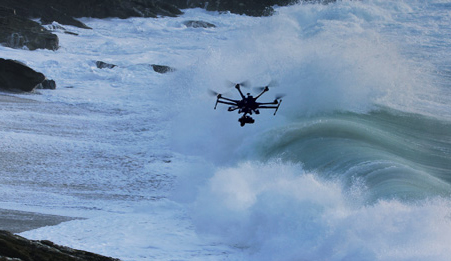
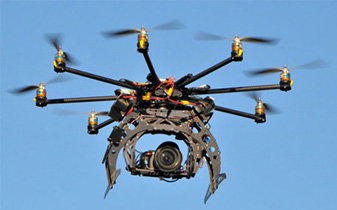
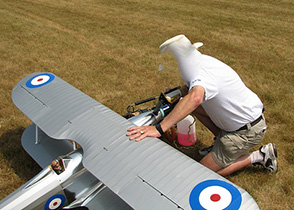
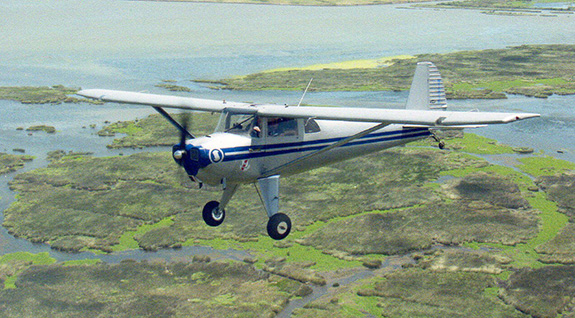
Add Your Comments
Comments
(Hide Comments)
It is time for real American patriots from all parts of the spectrum to destroy any and all Drones used to violate your rights over your Private Property.
You have allalready LOST ALL your electronic privacy and now lose all your Visual private rights, thanks to Your Elected Reps, their government Drones know you.................You have already lost most of your rights.
When will you cry ENOUGH and strike aback?
I am betting that YOU spineless idiots NEVER stand on your HIND LEGS!
You have allalready LOST ALL your electronic privacy and now lose all your Visual private rights, thanks to Your Elected Reps, their government Drones know you.................You have already lost most of your rights.
When will you cry ENOUGH and strike aback?
I am betting that YOU spineless idiots NEVER stand on your HIND LEGS!
shooting down drones is a strategic error, (does little, and makes droners look like victims instead of villains) besides they will just be replaced at taxpayer expense.
secondly, folks on indybay are plenty brave about standing up to government oppression, or i wouldn't be attending their trials all the time.
finally a lot of us here feel that private property is theft from humanity.
if you want to protect your privacy, TENT YOUR YARD. if that violates local zoning, too bad. you have a 4th amendment right to privacy that can not be legislated away.
secondly, folks on indybay are plenty brave about standing up to government oppression, or i wouldn't be attending their trials all the time.
finally a lot of us here feel that private property is theft from humanity.
if you want to protect your privacy, TENT YOUR YARD. if that violates local zoning, too bad. you have a 4th amendment right to privacy that can not be legislated away.
The drones at issue here aren't owned by the government. They're owned by private citizens who fly them for a variety of reasons. The anti government folks are barking up the wrong tree here.
We are 100% volunteer and depend on your participation to sustain our efforts!
Get Involved
If you'd like to help with maintaining or developing the website, contact us.
Publish
Publish your stories and upcoming events on Indybay.
Topics
More
Search Indybay's Archives
Advanced Search
►
▼
IMC Network


